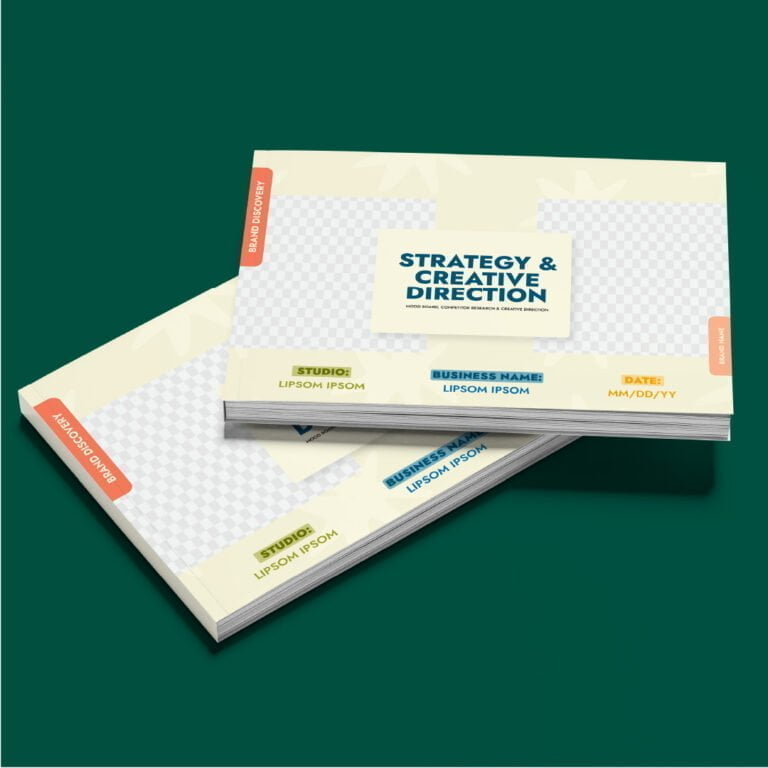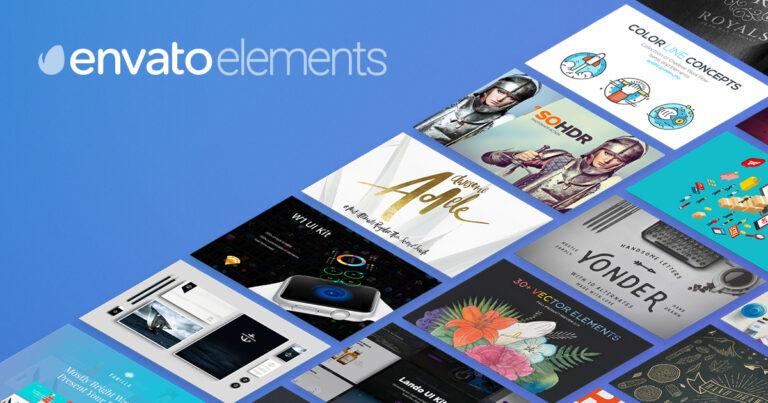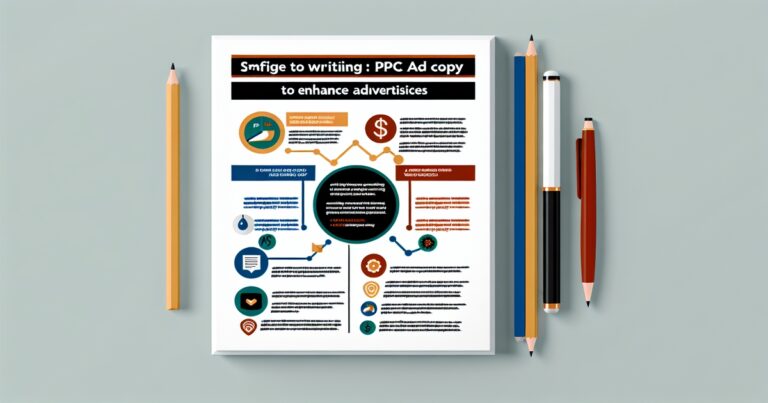Creating a business blog can be a powerful marketing tool that helps businesses reach out to their target audience. As a savvy business owner, you are aware of the importance of having a prominent online presence to remain competitive in today’s digital landscape. A business blog can help you achieve this by providing valuable information to your prospects and customers.
Definition of a Business Blog
A business blog is an online platform where companies can share relevant and targeted information with their audience. It is different from other types of blogs in that it focuses on topics related to the company’s products or services, industry news, trends, and insights. The content on a business blog should be informative, educational, and engaging for the reader.
In simpler terms, think of it as an extension of your website where you share more detailed information about your company and what you offer. A well-conceived and executed blog can help position your company as an authority in your field while also increasing brand awareness.
Importance of Having a Business Blog
Having a business blog offers numerous benefits for companies looking to establish themselves online. One significant advantage is that it helps boost your search engine optimization (SEO) efforts by providing fresh content that search engines crave. Search engines rank websites based on how frequently they update their content and whether the material adds value for readers.
Another benefit is that it allows you to showcase your expertise in your industry while building trust with potential customers. By sharing valuable articles or insights on topics related to your products or services, readers get an idea about what you do and how knowledgeable you are about it.
Having a well-crafted business blog can lead to increased traffic to your website from social media shares or referrals from other sites linking back to yours. In short, creating quality content consistently will help build brand awareness while converting interested prospects into loyal customers over time.
Determine Your Blog’s Purpose Identifying your target audience
The first step in creating a business blog is to identify your target audience. Before starting, it’s important to know who you are writing for, what their interests are, and what they want to read about. This can help you create content that will resonate with your audience and keep them engaged on your blog.
To identify your target audience, you need to consider factors such as age range, gender, location, interests, and occupation. Once you have identified your target audience, you can start thinking about the kind of content that will appeal to them.
For example, if your blog is targeting millennial women interested in fashion and beauty products, then writing about the latest makeup trends might be a good topic for your blog. Additionally, knowing who your readers are can help with promotion as well; social media platforms like Instagram and Twitter might be particularly useful for reaching younger audiences. Setting goals for your blog
When starting a business blog it’s essential to set specific goals for what you want to achieve with it. These goals should be realistic yet challenging enough that they push you towards growth.
Some common blogging goals include increasing traffic or generating leads or sales from the content on the site. By setting clear objectives from the beginning of creating a business blog will ensure that everyone involved knows exactly what they’re working towards achieving which is important in terms of focusing time and efforts appropriately. Choosing a niche
A niche refers to a specific area of expertise or interest that sets you apart from others in the industry by providing innovative ideas. It’s essential to choose something that aligns with both personal passions as well as relevant expertise areas so there’s an authentic connection between writer/brand voice without feeling forced or commercialized. Some tips when choosing a niche would be researching different markets before making decisions; creating a list of topics that interest you; and figuring out what unique concepts or ideas will separate your blog from the competition.
This will allow you to find your own specific voice which is vital to create a loyal readership. A niche can help attract new readers while building authority with current ones by providing consistent, valuable content.
Set Up Your Blogging Platform
Choosing a Blogging Platform
The first step in setting up a blog is choosing which platform to use. There are many options available, but the most popular ones are WordPress, Blogger, and Wix.
WordPress is by far the most widely used platform and offers the most flexibility in terms of design and functionality. Blogger is a simpler platform that may be better for beginners who want an easy-to-use interface.
Wix combines both elements of drag-and-drop design like Blogger with versatile features of WordPress. When choosing your blogging platform, consider your goals for your blog and what features you need to achieve them.
For example, if you plan on monetizing your blog through affiliate marketing or selling products, you will need a platform that allows for e-commerce capabilities. Take some time to research each option and determine which one fits best for your needs.
Choosing a Domain Name and Hosting Service
Once you have chosen your blogging platform, it’s time to choose a domain name and hosting service. Your domain name should be reflective of your brand or niche and easy to remember. When brainstorming domain names, make sure it’s not already taken by checking with registrars such as GoDaddy or Namecheap.
Your hosting service is where all of your blog’s files will live on the internet, so it’s important to choose one that is reliable and secure. Some popular hosting services include Bluehost, SiteGround, HostGator among others; these services offer various plans depending on the traffic volume you expect on your site.
Customizing Your Blog’s Design
Customizing the design of your blog is crucial in establishing its identity as well as creating an effective brand image in people’s minds. The design should reflect the tone of your business while ensuring user experience (UX) remains at its heart.
There are plenty of free and paid themes available for all platforms, so finding one that fits your brand shouldn’t be difficult. In addition to choosing a theme, your design should include a logo, color scheme, and typography that is consistent across all pages.
This helps to create brand recognition and also makes navigating through the website an easy task for the reader. Keep in mind that a well-designed blog is easier to navigate, which can lead to increased engagement with your content.
Setting up your blogging platform requires careful consideration of various elements including which platform you are going to use, choosing a domain name and hosting service as well as customizing the design of your website. It’s important to choose wisely as this will affect user experience (UX) in addition to shaping how people view your blog’s brand image.
Develop Your Content Strategy
Creating a successful business blog requires a well-planned content strategy. You need to create quality and relevant content that engages your readers and builds credibility for your brand. To help you achieve this, it’s important to develop an editorial calendar, brainstorm content ideas and conduct keyword research.
Creating an Editorial Calendar
An editorial calendar is a plan that outlines the type of content you will publish on your blog and when you will publish it. It helps to organize your publishing schedule, keeps you accountable and provides structure to ensure that you have a consistent flow of high-quality content.
To create an effective editorial calendar, begin by determining how often you will post new articles or blog posts- weekly, bi-weekly or monthly. This depends on your audience’s preferences as well as the time and resources available for publishing content consistently.
Brainstorming Content Ideas
The next step in developing your business blog’s content strategy is brainstorming ideas for topics that are relevant to your audience and align with the goals of the blog. You may consider using social media platforms such as Twitter or LinkedIn groups where people in your industry participate in conversations relevant to what you are writing about.
You can also ask other bloggers in similar niches what topics they think would be interesting for their audiences or check out popular industry blogs about news related to hot topics related to developments within the niche. Consider including case studies, how-to guides, roundups of news articles from reputable sources and interviews with experts who bring valuable insights into the industry.
Researching Keywords And SEO
A crucial part of developing a successful business blog is conducting proper keyword research to ensure that search engines such as Google can easily find your site through target keywords which leads users directly from search engines to your blog. When done correctly, keyword research also helps you understand the topics your target audience is searching for in relation to your industry or niche. Use tools such as Google AdWords Keyword Planner to establish which terms people are using in search engines to find information relevant to your niche and incorporate it into the headlines and body of your content.
Also, pay attention to long-tail keywords that are more specific phrases that relate directly with what you’re offering. By incorporating these targeted keywords into your content, they increase the chances of ranking higher on search engine results pages.
In addition, ensure that all meta tags such as meta description and meta titles have been optimized with selected keywords for each blog post. Remember, while it’s essential for search engines to notice your business blog through proper SEO practices, the most important thing is writing quality content that will keep readers coming back again and again
Create High-Quality Content
Now that you have set up your blog, it’s time to focus on creating high-quality content. Your content is the central item that will attract and retain readers to your blog. Writing engaging headlines, creating visually appealing content with images or videos, and optimizing your content for search engines are three essential components of producing high-quality content.
Writing Engaging Headlines and Introductions
Your blog’s headline is the first thing that potential readers will see, and it plays a vital role in whether or not they’ll click through to read your post. Crafting a compelling headline is crucial for capturing their attention.
A great way to write headlines is by using numbers, questions, or interesting adjectives that hook the reader into reading more. In addition to a catchy headline, an engaging introduction can pique readers’ interest in your post.
Start with an attention-grabbing statement that relates to the main topic of your post. Hooking the reader from the start will make them more likely to read on.
Creating Visually Appealing Content with Images or Videos
Incorporating images or videos into your blog posts makes them more visually appealing and enhances the overall reading experience for your audience. Selecting relevant images that complement the text can help break up blocks of text while also conveying additional information about what’s being discussed.
When using video in a blog post, keep it short – most viewers won’t watch a long video on a blog post unless they’re genuinely interested in what you have to say. To add value to their experience watching the video try adding subtitles for easy comprehension.
Optimizing Your Content for Search Engines
To gain visibility among search engines like Google or Bing so that your content reaches more people, optimizing it for search engines is essential. Search Engine Optimization (SEO) involves identifying and incorporating relevant keywords into your blog posts.
Choose one or two keywords related to the topic of your post, and use them throughout the body of your content to help search engines find and categorize it. The keyword should appear in the title, URL, and meta-description of the post.
Additionally, ensure you make use of subheadings as more opportunities to add relevant keywords. This way you can avoid using a lot of repetitive wording while improving visibility in search engines.
Promote Your Blog
Sharing on Social Media Platforms
Social media platforms are the perfect tools to promote your business blog. They provide you with a direct line of communication to your target audience, allowing you to engage with them and share your content. However, it is important to choose the right social media platforms that are most relevant to your blog’s niche and audience.
For example, if you have a B2B blog, LinkedIn would be a more appropriate platform than Instagram. When sharing on social media, it is crucial to optimize your posts for each platform’s unique features.
This means creating visually appealing posts with images or videos, using hashtags appropriately, and tailoring the message according to the platform’s tone and audience. Remember that social media is not just about broadcasting your content but also about engaging with followers and building relationships.
Building an Email List
Building an email list is one of the most effective ways to promote your business blog because you can reach out directly to people who have already expressed interest in your content by signing up for updates. To build an email list, offer something valuable such as exclusive content or a free e-book in exchange for someone’s email address.
Once you have built an email list, use it wisely by sending regular newsletters or updates about new posts and other relevant news or offers related to your business. Make sure that all emails are personalized and include a clear call-to-action (CTA) to encourage readers to engage further with your blog.
Networking with Other Bloggers
Networking with other bloggers in your niche can help expand the reach of your business blog by increasing visibility through cross-promotion opportunities such as guest posting or collaborating on projects. It also provides a chance for knowledge-sharing and learning from others in the same industry. To network effectively with other bloggers, start by engaging with them on social media or through their blog comments section.
Then, attend industry events or join online communities to meet other bloggers in person. Remember to approach networking with a mindset of mutual benefit and be willing to offer value in return for any opportunities you may receive.
Measure Your Success
Once your blog is up and running, it’s important to track its progress and analyze your metrics to determine how well it’s performing. This will help you understand what works and what doesn’t, and make informed decisions to improve your blog’s results. Here are some key metrics to track:
Analyzing Traffic Metrics
One of the most important metrics to track is your blog’s traffic. It tells you how many people are visiting your site, where they’re coming from, how long they stay on your site, etc. Google Analytics is a great tracking tool that helps you monitor these metrics.
To get started with analyzing your traffic data, go to the “Audience Overview” section in Google Analytics. This will show you a breakdown of the number of visitors on your website during a certain period, where they came from (organic search, direct traffic or referral), their geographic location and more.
After identifying this information, start digging into each metric even further. Look for trends over time – have there been any spikes or drops in traffic?
Analyze which pages are getting the most views – can you replicate that success on other posts? Understanding these insights can help guide changes in content strategy or promotion efforts.
Making Adjustments To Improve Results
Once you have analyzed the data obtained from tracking key metrics such as traffic and engagement rates on your blog, adjustments may be necessary for improved performance. If there are pages that aren’t getting much traction but could be useful for readers/users/customers then consider revamping content or updating keywords so they rank higher for search engines.
If there has been a drop in engagement rates then consider ramping up promotional efforts by increasing social media activity or utilizing email marketing campaigns more frequently with carefully crafted messaging geared towards promoting specific sets of content. It’s essential not only to track and analyze metrics for your blog but also consistently make data-driven changes to drive better results.
Use the insights obtained from analytics to guide the way forward, and experiment with different approaches so that you can refine your strategy over time. By constantly analyzing and tweaking your approach, you’ll ensure that your business blog remains relevant, engaging, and successful.
Conclusion
Tracking metrics should be a routine practice in any blogging strategy. It helps bloggers understand what they are doing well, what needs improvement; it offers insights into how readers interact with their content and highlights areas with potential for growth.
By consistently monitoring essential metrics such as traffic rates and engagement data, bloggers can identify where to make changes to improve their content marketing efforts which is key in establishing a successful business blog. Keep in mind that tracking metrics is not an exact science of course – strategies will inevitably vary depending on individual goals- but being armed with this information will allow you to make more informed decisions about how best to achieve success of your blog over time!
Conclusion
Creating a business blog can be a highly effective strategy for establishing your brand, engaging with customers, and driving traffic to your website. By following the steps outlined in this article, you can set yourself up for success and take advantage of all the benefits that come with blogging. First, it’s essential to determine your blog’s purpose by identifying your target audience and setting clear goals for what you hope to achieve through blogging.
Once you have a clear understanding of your purpose, choosing the right blogging platform, domain name, and hosting service will help ensure that your blog is easily accessible and visually appealing. Developing a content strategy is also critical to the success of any business blog.
Creating an editorial calendar, brainstorming content ideas that resonate with your audience, and optimizing for search engines are all ways to ensure that you’re consistently delivering high-quality content that drives engagement. Remember to promote your blog through social media platforms, building an email list of subscribers who are interested in your content.
By measuring success through analyzing engagement metrics regularly and making adjustments accordingly based on data-driven insights over time, you can continue to improve upon what works best for driving traffic to your website. Overall though it might take some time initially; creating a business blog is well worth the effort when done correctly.
When considering how often small businesses struggle with competitors or attracting new customers online — a well-executed business blog can be the secret weapon that sets you apart from others in an industry. With consistent effort over time put into creating high-quality content while taking measures to increase visibility through promotion — starting now could eventually lead towards new growth opportunities within any company.









